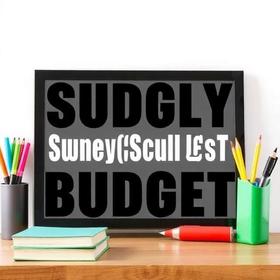Serving 332 students in grades Kindergarten-12, V.i.b.e. Academy (Virtual Institute For Brighter Education) ranks in the bottom 50% of all schools in Iowa for overall test scores (math proficiency is bottom 50%, and reading proficiency is bottom 50%).
The percentage of students achieving proficiency in math was 37% (which was lower than the Iowa state average of 68%). The percentage of students achieving proficiency in reading/language arts was 44% (which was lower than the Iowa state average of 70%).
The student-teacher ratio of 20:1 was higher than the Iowa state level of 14:1.
Minority enrollment was 42% of the student body (majority Hispanic), which was higher than the Iowa state average of 29% (majority Hispanic).
Top Rankings
V.i.b.e. Academy (Virtual Institute For Brighter Education) ranks among the top 20% of public schools in Iowa for:
Category
Attribute
Diversity
Percent Eligible For Free Lunch
School Overview
Grades Offered
Grades Kindergarten-12
Total Students
332 students
Gender %
Total Classroom Teachers
17 teachers
School Rankings
Overall Testing Rank
#1190 out of 1223 schools
(Bottom 50%)
(Bottom 50%)
Math Test Scores (% Proficient)
37%
68%
Reading/Language Arts Test Scores (% Proficient)
44%
70%
Science Test Scores (% Proficient)
35-39%
63%
Student-Teacher Ratio
20:1
14:1
American Indian
3%
n/a
Asian
1%
3%
Hispanic
29%
13%
Black
2%
7%
White
58%
71%
Hawaiian
1%
1%
Two or more races
6%
5%
All Ethnic Groups
Graduation Rate
55-59%
90%
Eligible for Free Lunch
57%
36%
Eligible for Reduced Lunch
5%
5%
School Statewide Testing
School District Name
Source: National Center for Education Statistics (NCES), IA Dept. of Education
Frequently Asked Questions
What is V.i.b.e. Academy (Virtual Institute For Brighter Education)'s ranking?
V.i.b.e. Academy (Virtual Institute For Brighter Education) is ranked #1190 out of 1,223 schools, which ranks it among the bottom 50% of public schools in Iowa.
What percent of students have achieved state testing proficiency in math and reading?
37% of students have achieved math proficiency (compared to the 68% IA state average), while 44% of students have achieved reading proficiency (compared to the 70% IA state average).
What is the graduation rate of V.i.b.e. Academy (Virtual Institute For Brighter Education)?
The graduation rate of V.i.b.e. Academy (Virtual Institute For Brighter Education) is 55-59%, which is lower than the Iowa state average of 90%.
How many students attend V.i.b.e. Academy (Virtual Institute For Brighter Education)?
332 students attend V.i.b.e. Academy (Virtual Institute For Brighter Education).
What is the racial composition of the student body?
58% of V.i.b.e. Academy (Virtual Institute For Brighter Education) students are White, 29% of students are Hispanic, 6% of students are Two or more races, 3% of students are American Indian, 2% of students are Black, 1% of students are Asian, and 1% of students are Hawaiian.
What is the student-teacher ratio of V.i.b.e. Academy (Virtual Institute For Brighter Education)?
V.i.b.e. Academy (Virtual Institute For Brighter Education) has a student ration of 20:1, which is higher than the Iowa state average of 14:1.
What grades does V.i.b.e. Academy (Virtual Institute For Brighter Education) offer ?
V.i.b.e. Academy (Virtual Institute For Brighter Education) offers enrollment in grades Kindergarten-12
What school district is V.i.b.e. Academy (Virtual Institute For Brighter Education) part of?
V.i.b.e. Academy (Virtual Institute For Brighter Education) is part of Sioux City Community School District.
Recent Articles

Public School Open House & Enrollment Season Guide
A parent-focused guide to the public school open house and enrollment season, with expert questions, timelines, and decision tips.

School Supply Budget 2026: Fees, Books, Tech Costs
School Supply Budget 2026 guide for parents, covering fees, textbooks, technology, and hidden extras to plan ahead.

Education Funding in America (2025 Update)
Comprehensive 2025 update on public school funding in America, new federal and state policies, per-pupil spending, and equity challenges.





